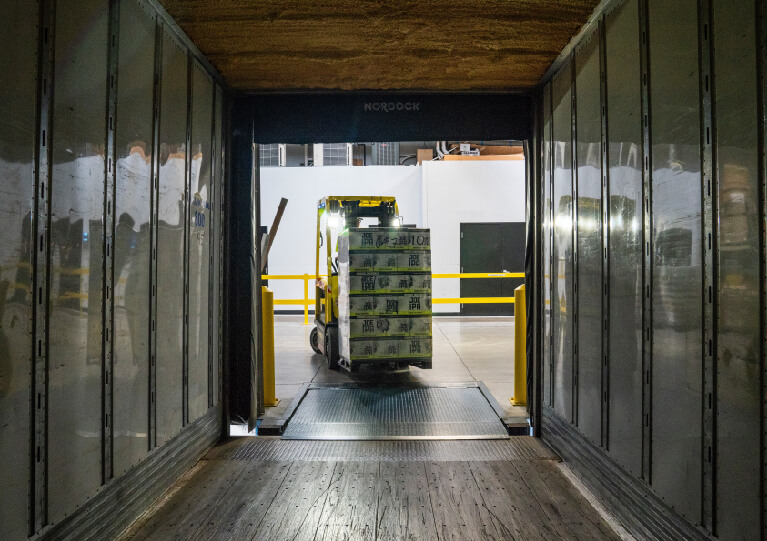Wondering what types of forklift licenses there are and how you can get them? Whether you’re a warehouse worker, logistics manager, or simply someone looking for new career opportunities, knowing this topic can open new career doors for you. In this article, we’ll explain what types of forklift certifications there are and how you can obtain them to expand your competencies and increase your value in the job market.
Why are forklift licenses important?
Occupational safety
- Reducing the risk of accidents -. Forklift licenses ensure that operators are properly trained in the safe operation of this type of machinery.
- Understanding hazards -. Training focuses on identifying potential hazards in the work environment and strategies to minimize them.
Regulatory compliance
- Meeting legal requirements – In many countries, regulations require forklift operators to be certified. Failure to do so can result in legal sanctions for employers.
- Raising professional standards – Certifications are proof that an operator has the knowledge and skills to meet prevailing safety and efficiency standards.
Professionalism and career development
- Recognition of competence – The credentials are recognition of the operator’s professionalism and competence in the area of forklift operation.
- Professional development – Possession of a certificate may be required for promotion to a higher position or to work in more demanding environments.
Operational efficiency
- Increased productivity – Trained operators can do their jobs more effectively and efficiently, resulting in increased overall productivity in the workplace.
- Better risk management – Authorized operators are more aware, minimizing the risk of outages.
Increased confidence and accountability
- Building trust among employers and customers – Eligibility demonstrates the responsibility and trust that employers and customers can place in operators.
- Raising safety standards in the industry – Having operators with the proper credentials contributes to raising overall safety standards in the industry.
Types of forklift authorizations
In 2023, the types of forklift authorizations were reduced to two main categories, replacing the earlier more complicated system. The current categories are:
- Advanced Category -. This category includes forklifts that are equipped with advanced lifting mechanisms. In particular, this applies to models with the ability to adjust the height with the boom, as well as trucks that allow lifting of both the load and the operator. In addition, licenses in this category allow the operation of all other forklifts that are classified in a lower category.
- Basic Entitlement Category -. This category includes authorizations to operate standard forklifts that have a lifting mechanism, but are not equipped with an overhang or the ability to lift the operator with the load. These authorizations focus on the more basic models of forklifts that are commonly used in many industries.
Currently, qualification certificates for forklifts, which are issued by the Office of Technical Inspection, have a fixed period of validity. The period varies 5 to 10 years, depending on the type of vehicle in question:
- Certificates authorizing the use of forklifts with specialized functions, including models with a boom and those capable of lifting both operator and load, are valid for a period of a period of five years.
- Certificates for forklifts that are not classified as specialized have a ten-year validity period.
When the expiration date of a qualification certificate is approaching, it is possible to free renewal. In order to extend the entitlement, the appropriate application must be submitted no later than three months Before the expiration of the current validity of the document.
How to get a forklift license?
In order to obtain a 2023 forklift license in Poland, it is necessary to meet several requirements and undergo the appropriate training process. Here are the key steps and requirements:
Prerequisites
- Age: You must be at least 18 years old.
- Education: A minimum of primary education is required.
- Health Status: It is necessary to have a medical certificate that there are no contraindications to work as a forklift operator.
Course and exam
- Training course – The candidate must complete a forklift course at an accredited training center. This course covers both theory and practice of forklift operation. When choosing a course, you should focus on its quality and make sure it ends with a state exam UDT.
- UDT exam -. Upon completion of the course, in order to obtain the UDT to operate forklifts, the candidate must take an exam administered by the Office of Technical Inspection After completing the relevant training. The examination process is divided into two parts: theoretical, consisting of a written test of knowledge, and practical, which involves maneuvering a forklift on a specially prepared site.
Consequences of not having valid credentials
- Keep in mind that, not having a valid forklift license can lead to legal consequences and pose safety risks.












